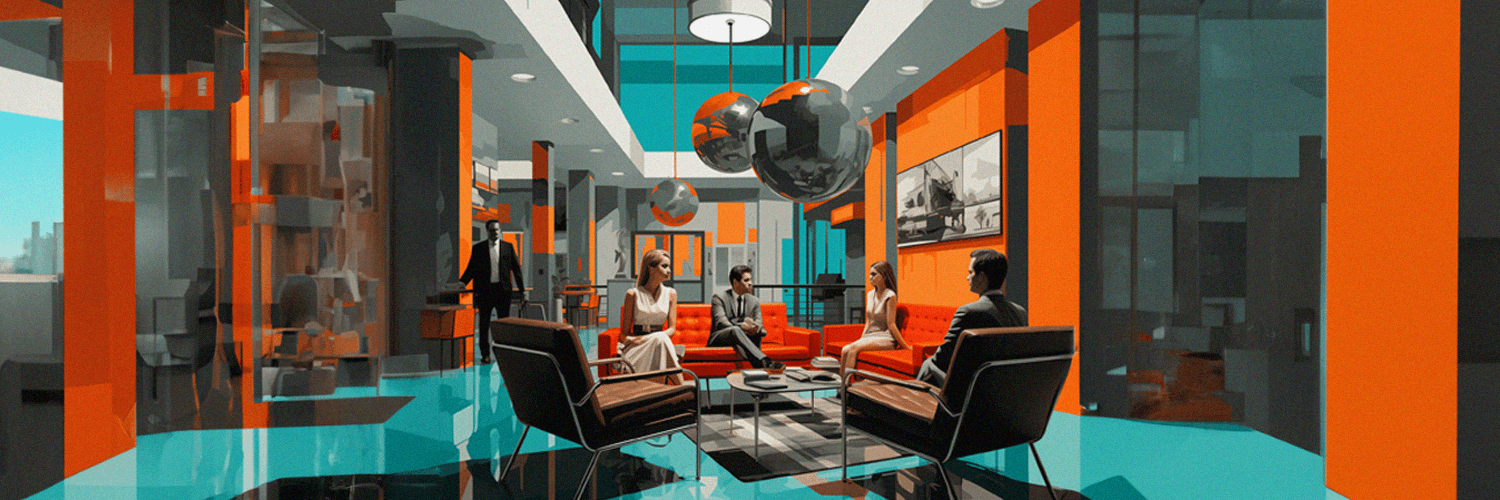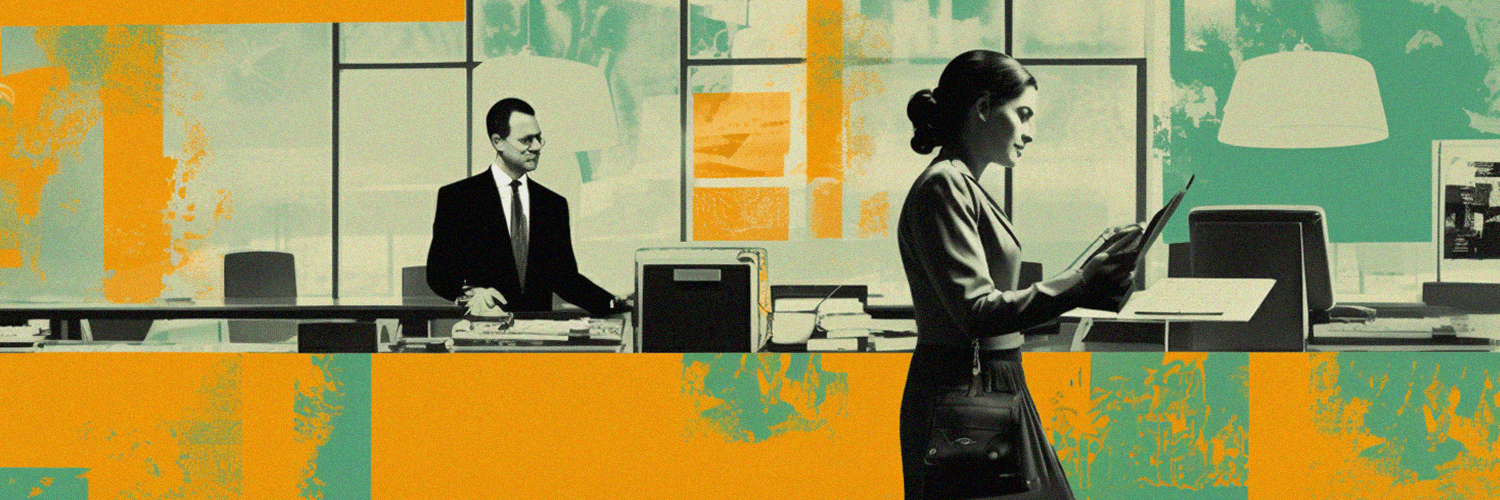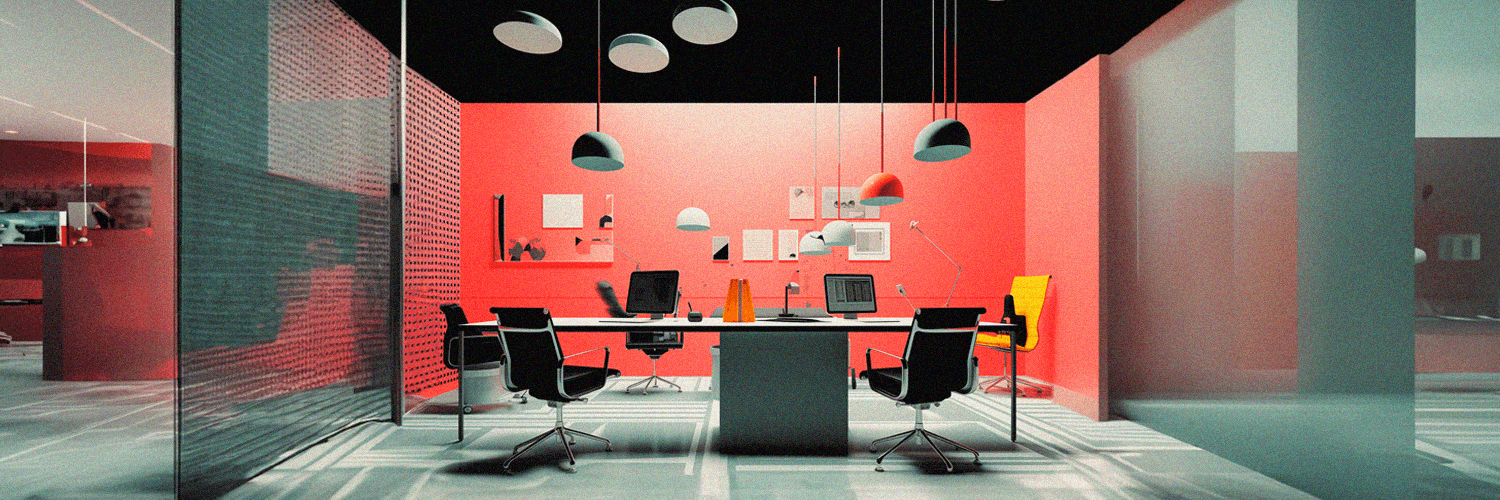Getting from point A to point B in today's modern offices can be surprisingly complex. That's where wayfinding signage comes into play, guiding employees and visitors through the maze of hallways and meeting rooms. Beyond helping people find their way, wayfinding signs contribute to a smoother, safer, and more welcoming workplace environment.
In this article, we invite you to examine the different types of wayfinding signage encountered in office settings. We'll break down the categories, starting with directional signs that point you in the right direction to informational signs that offer helpful details about the spaces you're interacting with daily. Let's dive right in!
TL;DR:
- Wayfinding signage in offices guides employees and visitors through complex spaces, enhancing navigation and workplace experience.
- There are four main types of wayfinding signs: directional, informational, identification, and regulatory, each serving distinct purposes.
- Directional signs help navigate through office layouts, pointing towards various sections like departments and emergency exits.
- Informational signs provide details about the office environment and its services, such as cafeteria locations and Wi-Fi details.
- Identification signs denote specific areas or resources, like conference rooms and restrooms, enhancing ease of navigation.
- Regulatory signs ensure safety and compliance with rules, including fire exits, no-smoking areas, and hygiene practices.
- Visual elements like color, symbols, typography, and imagery play crucial roles in making wayfinding signage effective and user-friendly.
- Innovations in wayfinding signage include the use of augmented reality, smartphone integration, and data analytics to improve navigation and efficiency.
What Is a Wayfinding Sign?
A wayfinding sign is integral to environmental graphic design, guiding people through a physical environment and enhancing their understanding and experience of the space. These signs help to navigate complex spaces, such as office buildings, campuses, hospitals, and urban centers, by providing clear directions, information, and identifications of different locations within the area.
Wayfinding signage encompasses various types of signs, including directional signs that point the way to specific destinations, informational signs that offer details about the environment and its services, identification signs that label particular spaces or areas, and regulatory signs that inform about the rules and guidelines of the space.
Effective wayfinding signs are functional, guiding users to their destinations with ease and aesthetically pleasing, contributing to the overall ambiance of the space and reinforcing brand identity. Through strategic placement and thoughtful design, wayfinding signs create a seamless and intuitive navigation experience, reducing confusion and enhancing the usability of the space.
4 Types of Wayfinding Signage
There are four main types of wayfinding signage: directional, informational, identification, and regulatory, each serving a unique purpose in fostering an intuitive and efficient office environment.
Type #1: Directional Signs
Defining Directional Signage
Directional signs, often considered the backbone of wayfinding signage systems, are pivotal in navigating the intricate office layouts. These signs serve as visual guides, leading employees and visitors through complex spaces with clarity and ease. They are strategically placed at key decision points like entrances, hallways, and intersections, where people will likely need guidance on how to proceed.
Functionality
The primary function of directional signs is to point toward various sections of the office, such as different departments, meeting rooms, restrooms, and emergency exits. They are designed to be highly visible and easily understandable, often using universally recognized symbols, arrows, and concise language to ensure the information is accessible to everyone, including those with disabilities.
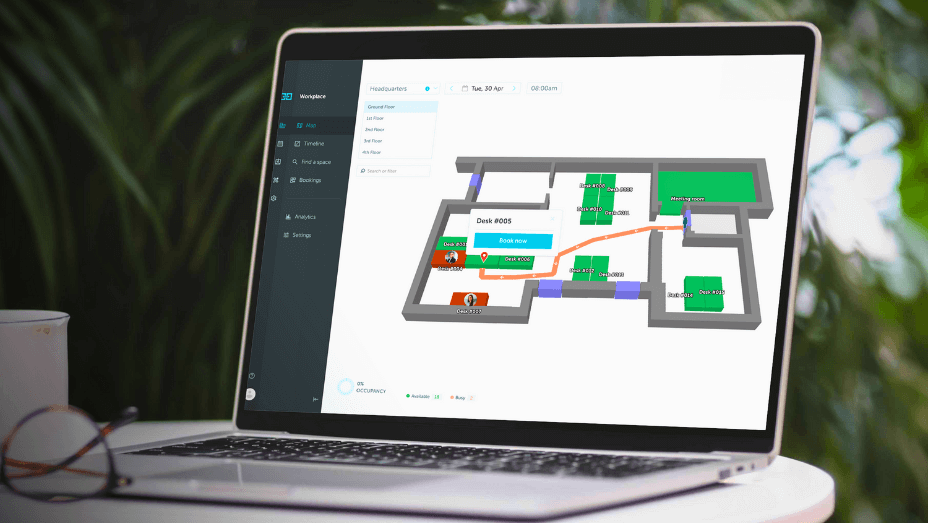
Example of directional wayfinding signage in the Yarooms Workplace Experience Platform: accurate real-time navigation within the office space.
Design Considerations & Best Practices
In terms of design, directional signs must balance aesthetic appeal and functionality. They should align with the office's overall branding and interior design, using consistent colors, fonts, and styles that complement the workplace environment. This not only enhances the visual appeal of the space but also reinforces brand identity and creates a more cohesive and professional atmosphere.
Furthermore, effective directional signage requires careful planning and consideration of the user's journey throughout the office space. It involves analyzing traffic flow, identifying potential points of confusion, and determining the most efficient paths for navigation. By addressing these aspects, directional signs facilitate smooth movement within the office, reducing frustration and saving time for employees and visitors.
Type #2: Informational Signs
What Is Informational Signage?
Informational signs serve as the communicative layer in an office's wayfinding signage system, providing essential details that assist individuals in understanding their surroundings and the services available to them. Unlike directional signs, which guide people to their destinations, informational signs offer context and specifics about the office space, enhancing the employee satisfaction and visitor experience by providing clarity and reducing uncertainty.
Use Cases
This type of wayfinding signage can cover a broad range of information, from the office layout and room functionalities to general office rules, operating hours, and amenities. For instance, informational signage might indicate the location of the cafeteria, outline the Wi-Fi network details, or explain the booking process for meeting rooms. They can also display safety information, such as emergency procedures and health guidelines, which is particularly important in ensuring a secure working environment.
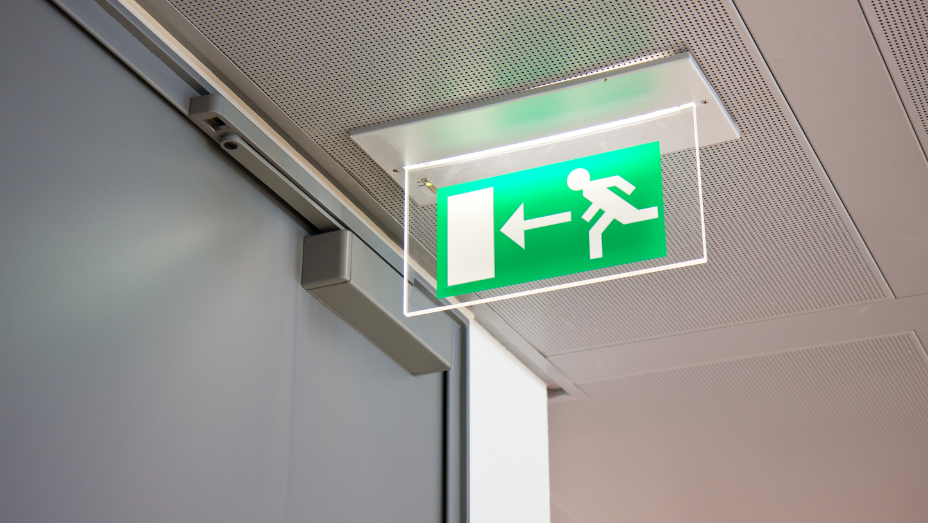
Example of informational signage in the office: emergency exit
Core Design Elements and High-Performance Practices
The design of informational signs requires careful consideration to ensure that they are not only informative but also engaging and easy to read. Clear, concise language and high-contrast visuals help in making these signs quickly understandable at a glance. Incorporating icons and symbols can also aid in universal comprehension, especially in diverse workplaces with multilingual staff and visitors.
Informational signs often complement the aesthetic and thematic elements of the office's interior design. By integrating the company's branding elements, such as logos, color schemes, and fonts, these signs reinforce the corporate identity and contribute to a cohesive and branded environment.
Strategic placement is crucial for the effectiveness of informational signs. They should be located where they are most needed and where they can be easily seen and read. This might include lobbies, common areas, elevators, and other high-traffic zones where people are likely to seek information.
Type #3: Identification Signs
Identification Signs: An Overview
Identification signs are a crucial element within an office's wayfinding signage ecosystem, primarily denoting specific areas, rooms, or resources. These signs help to eliminate confusion and enhance the ease with which employees and visitors can navigate the office environment. Identification signage is directly tied to the identity of the spaces they mark, making them indispensable for a clear and intuitive navigation experience.
The Scope
The scope of identification signs in an office setting ranges from naming conference rooms and designating office areas (like sales, marketing, or HR departments) to labeling facilities such as restrooms, kitchens, and printing stations. These signs act as both markers and descriptors, providing immediate recognition of the space's purpose or the services available within it. For example, an identification sign outside a conference room might include the room's name, its capacity, and available AV equipment, offering users a quick understanding of the space's suitability for their needs.
%20(1).png?width=928&height=523&name=Blog%20post%20photos%202%20(2)%20(1).png)
Example of identification signage in the office: hardware-agnostic Yarooms Room Panel application provides essential information about the meeting room, it's availability, and enables employees to book rooms on the spot.
Design & Placement Tips
In terms of design, identification signs must be clear and legible, often incorporating bold letters and numbers that can be easily read from a distance. The design aesthetic should align with the office's overall branding and wayfinding scheme to ensure consistency and cohesion. This includes consistent color schemes, typography, and imagery that reflect the company's brand identity and culture.
The strategic placement of identification signs is critical to their effectiveness. They are typically mounted directly beside or above the entrance to a space, at eye level, to ensure optimal visibility and legibility. The aim is to allow individuals to quickly identify their location within the office and understand the function of each space without the need for additional direction.
Furthermore, identification signs can also play a role in enhancing the office decor and atmosphere. Through creative design choices, these signs can contribute to the aesthetic appeal of the workspace, adding character and interest to office interiors. Whether through unique materials, innovative lighting, or artistic elements, identification signs offer an opportunity to blend functionality with style, enriching the overall office environment.
Type #4: Regulatory Signs
What Are Regulatory Signs?
Regulatory signs within the office environment are crucial in ensuring safety, security, and compliance with rules and regulations. These signs are authoritative, directing behavior and actions to maintain order and prevent accidents. Unlike directional or informational signs, which guide or inform, regulatory signs command or prohibit specific actions, making them essential for creating a safe and orderly workplace.
Examples of Regulatory Signage
Key examples of regulatory signs include those indicating fire exits and emergency evacuation routes, signs that enforce no-smoking policies, and signs that limit access to restricted areas. They also cover a wide range of safety instructions, such as warnings about wet floors, equipment safety, and guidelines for maintaining hygiene practices in communal areas.

Example of regulatory signage in the office: no smoking
Standards & Best Practices
Strict standards and legal requirements govern the design of regulatory signs to ensure they are immediately recognizable and understandable. They often use bold colors, with red, yellow, or green backgrounds, to signify stop, caution, and go, respectively. Symbols and pictograms are used extensively to convey messages quickly and across language barriers, ensuring that all employees and visitors can understand the rules, regardless of their language proficiency.
Regulatory signs must be prominently displayed in relevant areas to be effective. For example, no smoking signs should be placed in all areas where smoking is prohibited, while signs indicating fire exits and emergency procedures must be visible along all escape routes. The placement of these signs is critical to ensure that they are seen by everyone who needs to follow their directives, thereby enhancing the safety and security of the office environment.
The effectiveness of regulatory signs also depends on their maintenance. They should be regularly reviewed and updated to reflect any changes in regulations or office policies. Additionally, signs worn or damaged over time must be replaced to remain clear and legible.
The Role of Visual Elements in Enhancing Wayfinding Signage
Visual elements are integral in shaping the effectiveness of wayfinding and signage design. These aspects go beyond simply enhancing aesthetic appeal; they are pivotal in guiding users through complex environments like office buildings. Let's delve into how color, symbols, typography, and imagery influence the utility and user-friendliness of different types of wayfinding signs.
Color
Color is a powerful tool in environmental graphics and signage systems – including those for wayfinding purposes. It plays a dual role: it attracts attention due to its high visibility and can be used as a coding system to differentiate between areas or types of information.
Consider this scenario: within an office building, each floor could be represented by a specific color on all corresponding signs. Through consistent use throughout the environment, users quickly associate colors with their respective floors - reinforcing orientation and facilitating quicker decision-making when moving around.
Symbols
Symbols are another crucial visual element impacting wayfinding experiences significantly. They serve as vital cues that deliver essential information rapidly without relying heavily on text. Symbols break language barriers and speed up comprehension, making them perfect for diverse workplaces. For example, universally recognized pictograms, such as those symbolizing restrooms or emergency exits, enable visitors to navigate unfamiliar settings seamlessly.
Typography
The choice of typeface shouldn't be underestimated when considering effective signage wayfinding design—both style and readability factor substantially into usability. Clear, legible fonts improve recognition from distances while offering a visually pleasing aspect to signage, incorporating both functionality and aesthetics into one package. Differentiating key messaging through size amplification or distinctive fonts is another exciting aspect that boosts navigability for space users.
Imagery
The strategic placement of relevant images can enhance understanding among audiences while adding richness to the signage's design. These may include photographs, illustrations, or even 3D models that serve to guide and inform in tandem.
A classic example is a mural-sized office map at the entrance featuring highlighted zones, arrows pointing towards departments, or stylized footpaths leading to important areas. This visual approach allows for easy comprehension and makes wayfinding an interactive experience.
In conclusion, the purposeful integration of visual elements can significantly augment the efficiency and effectiveness of wayfaring signages, adding an engaging layer that aids users' spatial navigation while enhancing the overall aesthetic of a space.
Latest Trends and Innovations in Wayfinding Signage
In an era of constant evolution, the wayfinding signage industry is no exception. Let's assess some novel trends shaping this area!
Augmented Reality (AR) & Virtual Reality (VR)
Augmented and Virtual reality technologies have galvanized the wayfinding scenario in recent years. In particular, AR presents unique opportunities for office spaces by overlaying directional arrows or informational texts onto real-world images captured via mobile devices. This provides an immersive guidance experience unlike any other!
Meanwhile, VR introduces individuals to unfamiliar environments beforehand. It is a handy tool for new recruits or visitors as they get to understand routes without physically being present at the location.
Indoor Mapping
Indoor mapping is a cutting-edge trend in wayfinding signage, leveraging digital technologies to create detailed maps of interior spaces. This innovation goes beyond traditional static signage, providing dynamic, real-time navigational guidance within buildings. It integrates various technologies, such as GPS, Wi-Fi, and Bluetooth beacons, to offer precise location tracking and enhanced user experiences in complex indoor environments.
Through interactive floor maps, users can visualize their exact location within an office, view the layout of the surrounding area, and receive directions to their desired destination. That's exactly how it works in Yarooms Workplace Experience Platform. This trend represents a significant shift towards more interactive, user-friendly navigation systems, offering detailed insights into the indoor space and facilitating easier, more efficient movement within large or complex buildings.
Smarthphone Integration
As smartphone usage permeates all aspects of our lives, companies exploit this trend to brilliantly fuse personal devices with wayfinding tools!
Mobile apps often integrate indoor GPS solutions and detailed maps representing layouts of respective workspaces, complete with points of interest such as meeting rooms, restrooms, or cafeteria outlets. Such apps draw employees’ specific paths from origin to destination, which aids seamless transitions throughout buildings.
Utilization of Big Data
The third innovation brings attention to the data-driven approach fostering the development of smarter wayfinding systems. IoT devices capture data regarding foot traffic patterns in real-time, enabling administrators to adjust signages based on congestion or even alter paths during peak hours.
Moreover, assessing cumulative historical data can help foresee trends and shape future modifications for enhanced flow within premises.
Wrapping Up
To sum up, wayfinding signs comprise far more than mere decorative add-ons. From clearly defined identification signs to directional signage and detailed informational placards - they all play a necessary role in creating order within the workspace.
These essential tools help combat the feeling of disorientation that large or complex structures often induce. Furnishing punctual directions has benefits, such as promoting efficiency while minimizing confusion. They also establish an environment where employees and visitors feel comfortable traversing around since they are confidently guided.
Moreover, well-placed regulatory signs contribute to a secure working atmosphere by setting clear rules and ensuring safety protocols are followed. It's evident that fitting visuals and designs incredibly boost the ability to find one's way around offices smoothly and quickly.
The fruits borne from technological advances have spiced modern wayfinding solutions with remarkable creativity and innovation, enhancing usability through features like interactive maps or digital screens. Could we then consider navigating the modern office without them, anything but a journey into confusion?
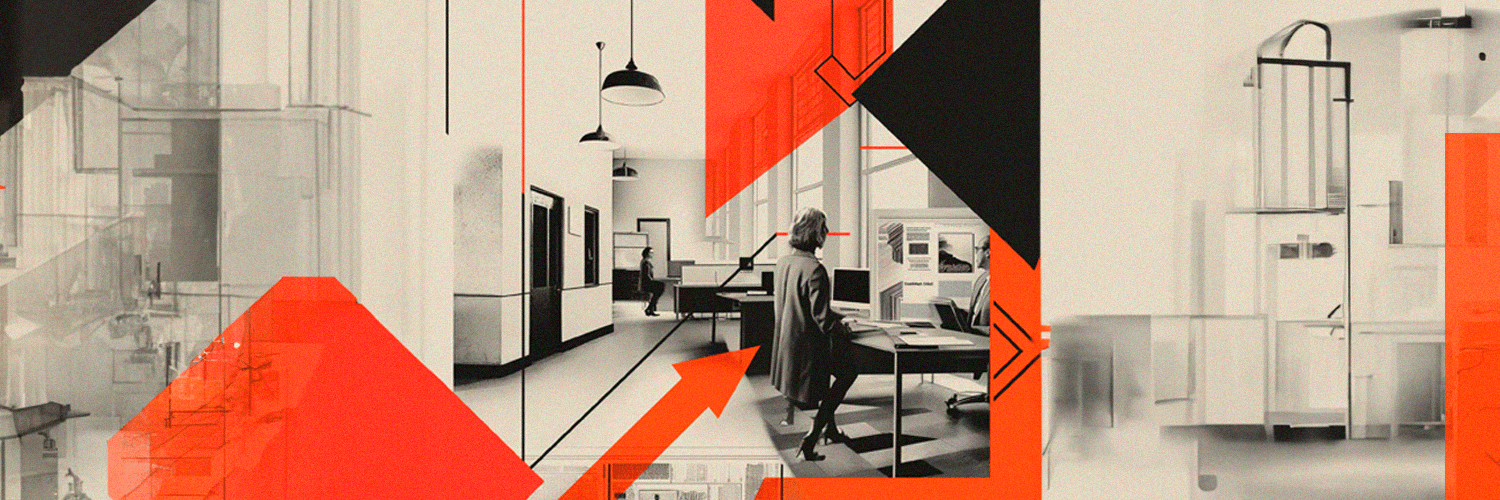

.png)
